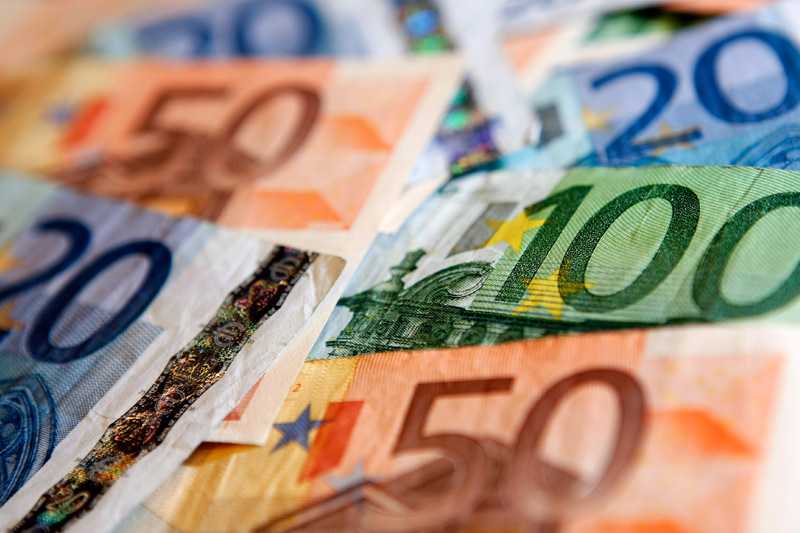Investing.com - The euro eased off 11-year lows against the U.S. dollar on Friday, but gains were expected to be limited as growing expectations for fresh stimulus measures by the European Central Bank coupled with a surprise policy move by the Swiss National Bank continued to weigh.
EUR/USD hit 1.1646 during late Asian trade, the session high; the pair subsequently consolidated at 1.1646, adding 0.13%.
The pair was likely to find support at 1.1567, Thursday's low and an 11-year low and resistance at 1.1796, Thursday's high.
The single currency remained under pressure after an interim ruling by the European Court of Justice on Wednesday was seen as clearing the way for the European Central Bank to implement quantitative easing measures at its upcoming meeting on January 22.
The advocate general of the European Court of Justice, Pedro Cruz Villalon, advised judges to approve the ECB's Outright Monetary Transactions program, a measure which was launched in 2012.
The euro regained ground against the Swiss franc after hitting lows of 0.8204 and diving over 12% on Thursday, with EUR/CHF climbing 4.50% to trade at 1.0216.
The SNB shocked markets on Thursday by scrapping the 1.20 per euro exchange rate floor it imposed in September 2011, in a bid to stave off deflation and prevent the continued appreciation of the safe-haven franc.
The central bank also cut rates to minus 0.75%, from minus 0.25% and lowered its target range for the three-month Libor to minus 1.25% to minus 0.25%, from minus 0.75% to 0.25%.
"The euro has depreciated considerably against the U.S. dollar and this, in turn, has caused the Swiss franc to weaken against the U.S. dollar. In these circumstances, the SNB concluded that enforcing and maintaining the minimum exchange rate for the Swiss franc against the euro is no longer justified," the central bank said in a statement.
The move indicated that the SNB sees a high likelihood that the ECB will implement quantitative easing measures at its upcoming meeting next week.
USD/CHF advanced 4.60% to 0.8796, off lows of 0.7360 hit on Thursday when the pair plummeted more than 11%.
The dollar shrugged off data on Thursday showing that the number of people who filed for unemployment assistance in the U.S. last week rose to a four-month high of 316,000, compared to expectations for a decline of 6,000.
A separate report showed that U.S. producer prices fell by the most in three years in December, falling 0.3% as energy costs tumbled.
In addition, the Federal Reserve Bank of Philadelphia said that its manufacturing index deteriorated to an 11-month low of 6.3 this month from December’s reading of 24.5, while the New York Fed said that its general business conditions index increased to 10.0 this month from a reading of -3.6 in December.
The U.S. dollar index, which measures the greenback’s strength against a trade-weighted basket of six major currencies, held steady at 92.53, not far from Thursday's 12-year highs of 93.30.
